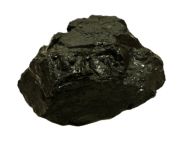The Environmental Protection Agency (EPA) is holding the first in a series of seven official public hearings today to collect comments on a proposal to federally regulate coal ash. Today’s hearing will take place at the Hyatt Regency Crystal City in Arlington, Va. from 10 a.m. to 9 p.m. and is expected to draw attendees from across the country.
The event comes amid growing evidence of utilities’ failure under the current state-led regulatory system to protect communities from the serious health hazards of coal ash.
A report released last week by environmental advocacy groups documented 39 additional sites in 21 states where coal ash has contaminated water supplies with arsenic and other toxic metals. That brings the total number of coal ash damage cases that have been documented to date to by regulators and independent watchdogs to 137 sites in 34 states.
A recent EPA risk assessment [PDF] found that people who live near coal ash impoundments and drink from wells have as much as a 1 in 50 chance of getting cancer due to contamination with arsenic, one of the most common and dangerous pollutants in coal ash. The same assessment found that living near coal ash dumps also increases the risk of damage to the liver, kidneys, lungs, and other organs.
“There is no greater reason for coal ash regulation than preventing the poisoning of our water,” says Lisa Evans, an attorney with the nonprofit law firm Earthjustice, which released the report along with the Environmental Integrity Project and the Sierra Club. “We now have 39 more good reasons for a national coal ash rule. The mounting number of contaminated sites demonstrates that the states are unable or unwilling to solve this problem.”
The states where the new sites were identified are Arkansas, Connecticut, Florida, Illinois, Iowa, Kentucky, Louisiana, Michigan, Nebraska, New York, North Carolina, North Dakota, Ohio, Oklahoma, Oregon, Pennsylvania, South Dakota, Tennessee, Texas, Virginia, and Wisconsin. At least 18 of the 39 newly documented sites are located within five miles of a public groundwater well that could potentially be affected by pollutants from the coal ash.
A February 2010 report by EIP and Earthjustice documented 31 cases of coal ash contamination in 14 states. And a 2007 EPA report [PDF] identified 67 proven and suspected damages cases across the country. These 137 sites represent about 29 percent of the approximately 467 power plants plants that dispose of coal ash. For a chart listing all 137 sites by state along with the companies responsible and locations, click here [PDF].
The state with the most coal ash damage cases identified to date is Wisconsin with 13, followed by Illinois with 12, North Carolina with 10, Indiana and Pennsylvania with nine each, and Florida with eight.
The latest count of contaminated sites was compiled using state groundwater monitoring data obtained through Freedom of Information Act requests. It’s possible there are other contamination cases that still have not been discovered, since many states don’t require groundwater monitoring at coal ash dump sites.
Large coal ash-generating states that don’t require such monitoring include Alabama, Arizona, Georgia, Indiana, Ohio, Mississippi, Missouri, New Mexico, and Tennessee, where the 2008 collapse of a coal ash impoundment at the Tennessee Valley Authority’s Kingston plant brought the issue of coal ash regulation to national attention. Mississippi is the only state in the South where a coal ash damage case has not been documented to date.
In May, the EPA released two proposed options for regulating coal ash — a stricter version that would regulate it under Subtitle C of the Resource Conservation and Recovery Act, which governs hazardous waste, and a less strict option that would handle coal ash like ordinary solid waste under RCRA Subtitle D, offering guidelines but leaving oversight largely up to the states.
Public health and environmental advocates favor the stricter option, pointing out that state oversight has failed to adequately protect the public from the dangers of coal ash. But the politically powerful utility industry does not want coal ash to be treated like hazardous waste, arguing that such an approach would be too costly and discourage efforts to recycle coal ash.
The agency will be accepting public comments on the proposed regulations through Nov. 19. Besides today’s public hearing in Virginia, other official hearings are planned for Denver on Sept. 2, Dallas on Sept. 8, Charlotte, N.C. on Sept. 14, Chicago on Sept. 16, Pittsburgh on Sept. 21, and Louisville, Ky. on Sept. 28. For more details on the proposed rules and the official hearings, click here.
There is also a people’s hearing planned for Sept. 2 in Harriman, Tenn., where a coal ash impoundment at TVA’s Kingston plant collapsed in 2008, sending a billion gallons of toxic coal ash waste onto a residential community and into the Emory River.
Among those planning to attend today’s hearing in Virginia is John Wathen, the Hurricane Creekkeeper from Alabama. After documenting extensive problems with the landfill in the impoverished rural Alabama community where TVA and EPA chose to dump most of the coal ash spilled in the Kingston disaster, he turned his attention to documenting the BP oil spill in the Gulf of Mexico. He sees a connection between the two catastrophes.
“Coal or oil, it is the same thing,” Wathen says. “Disemboweling the Earth for temporary energy and destruction of natural resources, people, and the quality of life we are all guaranteed under the Constitution.”
(A version of this story originally appeared at Facing South.)




